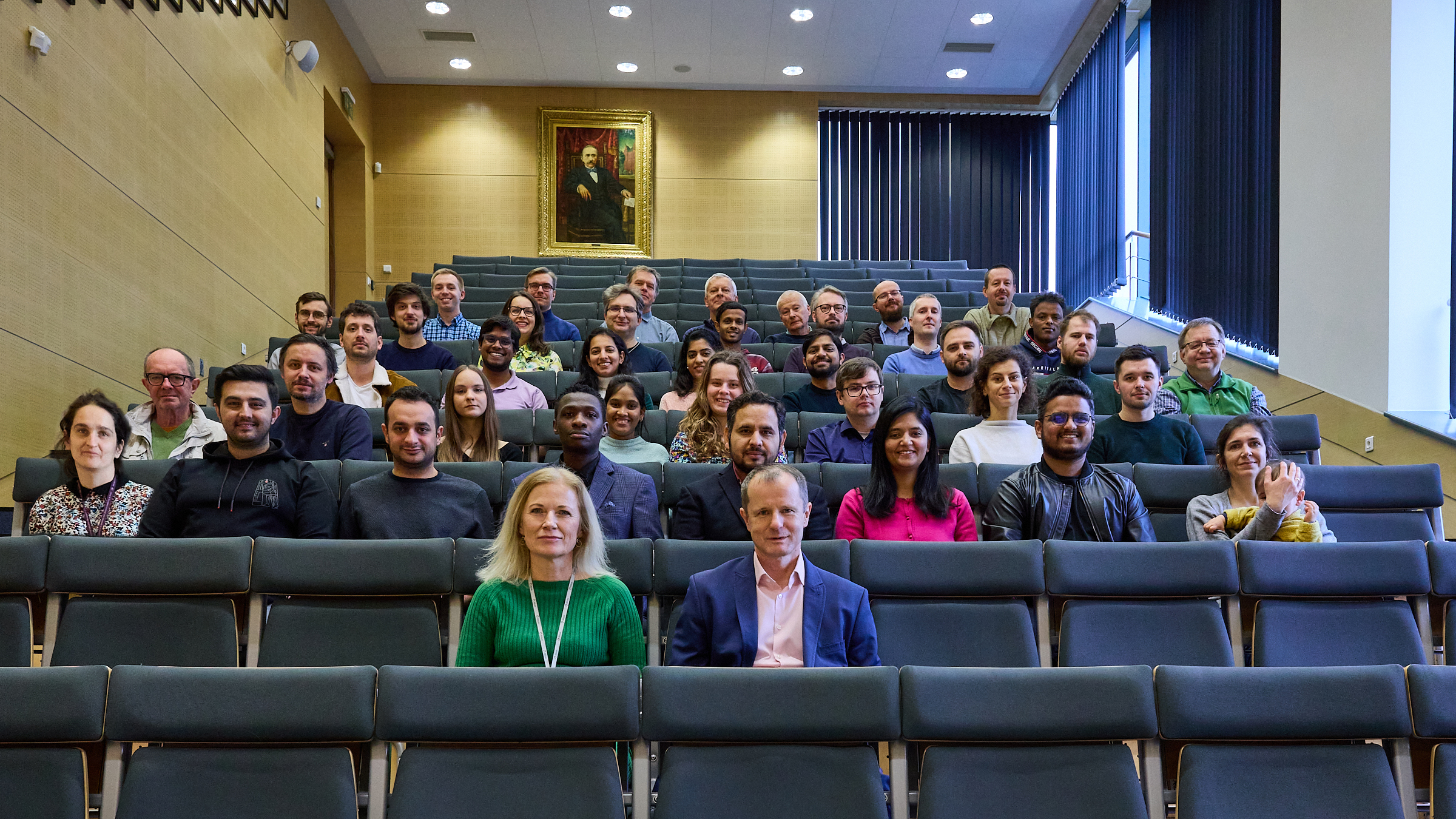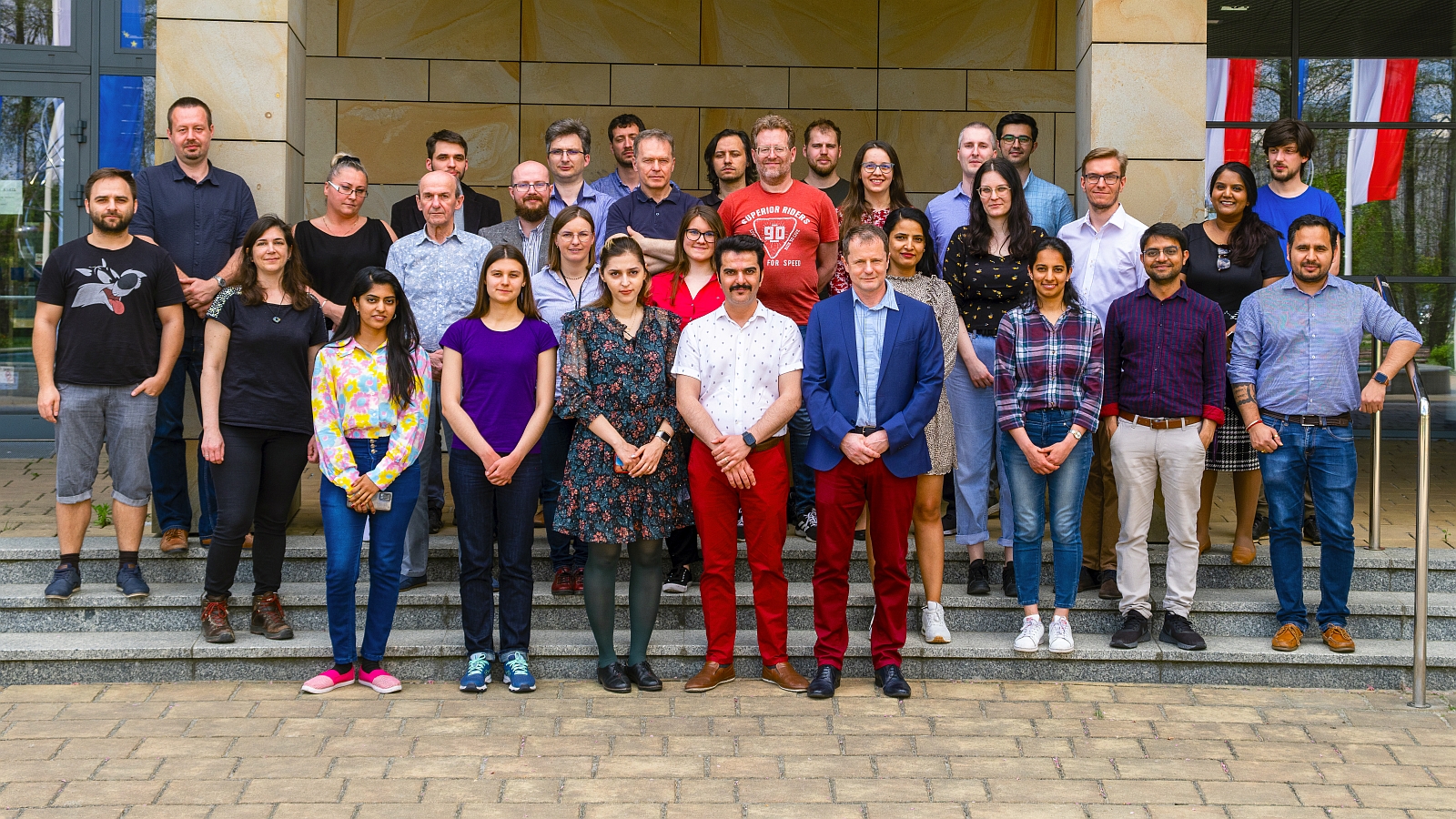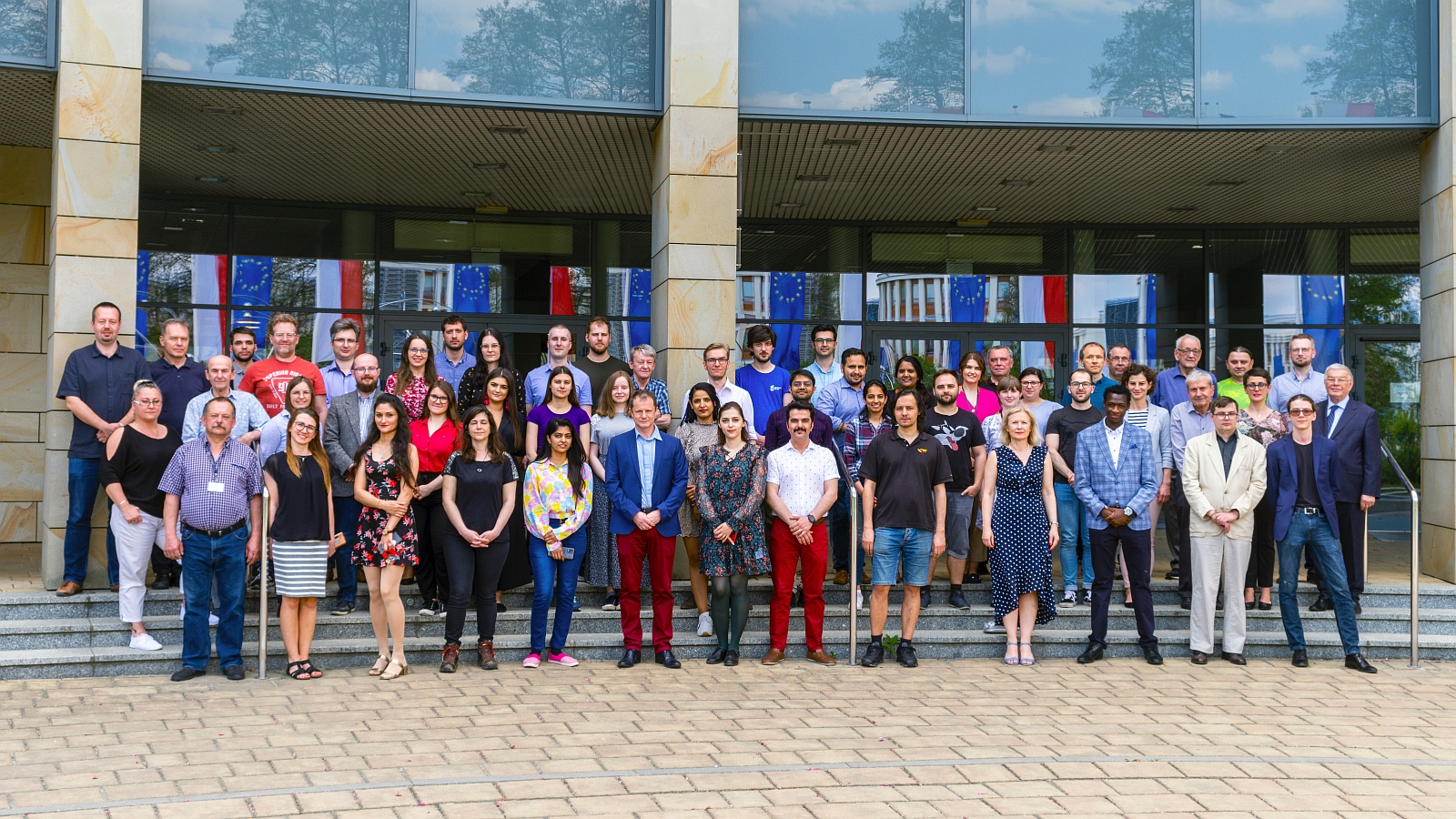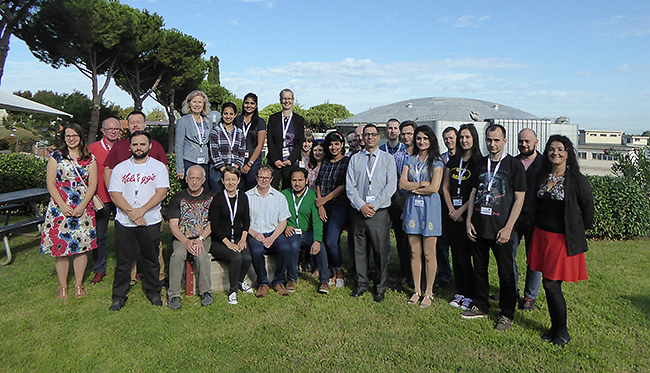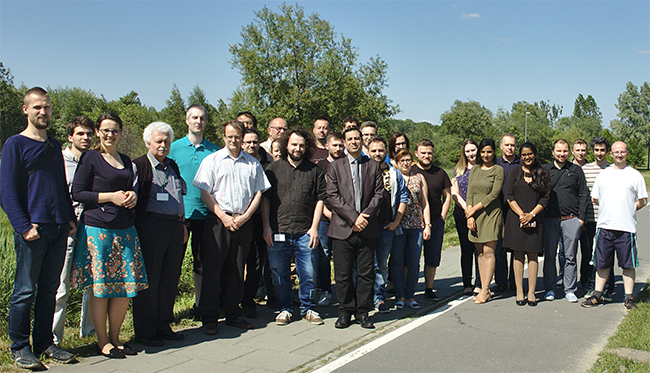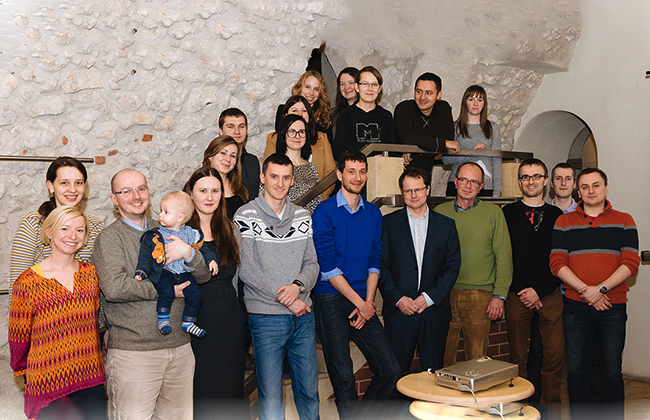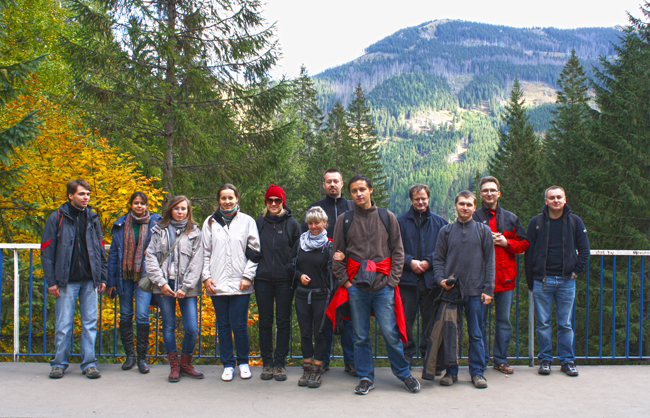Nonmaximal entanglement of photons from positron-electron annihilation demonstrated using a novel plastic PET scanner

abstract
In the state-of-the-art Positron Emission Tomography (PET), information about the polarization of annihilation photons is not available. Current PET systems track molecules labeled with positron-emitting radioisotopes by detecting the propagation direction of two photons from positron-electron annihilation. However, annihilation photons carry more information than just the site where they originated. Here we present a novel J-PET scanner built from plastic scintillators, in which annihilation photons interact predominantly via the Compton effect, providing information about photon polarization in addition to information on photon direction of propagation. Theoretically, photons from the decay of positronium in a vacuum are maximally entangled in polarization. However, in matter, when the positron from positronium annihilates with the electron bound to the atom, the question arises whether the photons from such annihilation are maximally entangled. In this work, we determine the distribution of the relative angle between polarization orientations of two photons from positron-electron annihilation in a porous polymer. Contrary to prior results for positron annihilation in aluminum and copper, where the strength of observed correlations is as expected for maximally entangled photons, our results show a significant deviation. We demonstrate that in porous polymer, photon polarization correlation is weaker than for maximally entangled photons but stronger than for separable photons. The data indicate that more than 40% of annihilations in Amberlite resin lead to a non-maximally entangled state. Our result indicates the degree of correlation depends on the annihilation mechanism and the molecular arrangement. We anticipate that the introduced Compton interaction-based PET system opens a promising perspective for exploring polarization correlations in PET as a novel diagnostic indicator.
Positronium image of the human brain in vivo

abstract
Positronium is abundantly produced within the molecular voids of a patient?s body during positron emission tomography (PET). Its properties dynamically respond to the submolecular architecture of the tissue and the partial pressure of oxygen. Current PET systems record only two annihilation photons and cannot provide information about the positronium lifetime. This study presents the in vivo images of positronium lifetime in a human, for a patient with a glioblastoma brain tumor, by using the dedicated Jagiellonian PET system enabling simultaneous detection of annihilation photons and prompt gamma emitted by a radionuclide. The prompt gamma provides information on the time of positronium formation. The photons from positronium annihilation are used to reconstruct the place and time of its decay. In the presented case study, the determined positron and positronium lifetimes in glioblastoma cells are shorter than those in salivary glands and those in healthy brain tissues, indicating that positronium imaging could be used to diagnose disease in vivo.
Discrete symmetries tested at 10^-4 precision using linear polarization of photons from positronium annihilations

abstract
Discrete symmetries play an important role in particle physics with violation of CP connected to the matter-antimatter imbalance in the Universe. We report the most precise test of P, T and CP invariance in decays of ortho-positronium, performed with methodology involving polarization of photons from these decays. Positronium, the simplest bound state of an electron and positron, is of recent interest with discrepancies reported between measured hyperfine energy structure and theory at the level of 10^-4 signaling a need for better understanding of the positronium system at this level. We test discrete symmetries using photon polarizations determined via Compton scattering in the dedicated J-PET tomograph on an event-by-event basis and without the need to control the spin of the positronium with an external magnetic field, in contrast to previous experiments. Our result is consistent with QED expectations at the level of 0.0007 and one standard deviation.
Colloquium: Positronium physics and biomedical applications

abstract
Positronium is the simplest bound state, built of an electron and a positron. Studies of positronium in vacuum and its decays in medium tell us about quantum electrodynamics (QED) and about the structure of matter and biological processes of living organisms at the nanoscale, respectively. Spectroscopic measurements constrain our understanding of QED bound state theory. Searches for rare decays and measurements of the effect of gravitation on positronium are used to look for new physics phenomena. In biological materials positronium decays are sensitive to the intermolecular and intramolecular structure and to the metabolism of living organisms ranging from single cells to human beings. This leads to new ideas of positronium imaging in medicine using the fact that during positron emission tomography (PET) as much as 40% of positron annihilation occurs through the production of positronium atoms inside the patient?s body. A new generation of the high sensitivity and multiphoton total-body PET systems opens perspectives for clinical applications of positronium as a biomarker of tissue pathology and the degree of tissue oxidation.
Positronium imaging with the novel multiphoton PET scanner

abstract
In vivo assessment of cancer and precise location of altered tissues at initial stages of molecular disorders are important diagnostic challenges. Positronium is copiously formed in the free molecular spaces in the patient?s body during positron emission tomography (PET). The positronium properties vary according to the size of inter- and intramolecular voids and the concentration of molecules in them such as, e.g., molecular oxygen, O2; therefore, positronium imaging may provide information about disease progression during the initial stages of molecular alterations. Current PET systems do not allow acquisition of positronium images. This study presents a new method that enables positronium imaging by simultaneous registration of annihilation photons and deexcitation photons from pharmaceuticals labeled with radionuclides. The first positronium imaging of a phantom built from cardiac myxoma and adipose tissue is demonstrated. It is anticipated that positronium imaging will substantially
enhance the specificity of PET diagnostics.
Testing CPT symmetry in ortho-positronium decays with positronium annihilation tomography

abstract
Charged lepton system symmetry under combined charge, parity, and time-reversal transformation (CPT) remain scarcely tested. Despite stringent quantum-electrodynamic limits, discrepancies in predictions for the electron-positron bound state (positronium atom) motivate further investigation, including fundamental symmetry tests. While CPT noninvariance effects could be manifested in non-vanishing angular correlations between final-state photons and spin of annihilating positronium, measurements were previously limited by the knowledge of the latter. Here, we demonstrate tomographic reconstruction techniques applied to three-photon annihilations of ortho-positronium atoms to estimate their spin polarisation without a magnetic field or polarised positronium source. We use a plastic-scintillator-based positron-emission-tomography scanner to record ortho-positronium (o-Ps) annihilations with a single-event estimation of o-Ps spin and determine the complete spectrum of an angular correlation operator sensitive to CPT-violating effects. We find no violation at the precision level of 10^{-4}, with an over threefold improvement on the previous measurement.
Positronium in medicine and biology

abstract
In positron emission tomography, as much as 40% of positron annihilation occurs through the production of positronium atoms inside the patient's body. The decay of these positronium atoms is sensitive to metabolism and could provide information about disease progression. New research is needed to take full advantage of what positronium decays reveal.
Etaprime and Eta Mesons with Connection to Anomalous Glue

abstract
We review the present understanding of etaprime and eta meson physics and these mesons as a probe of gluon dynamics in low-energy QCD. Recent highlights include the production mechanism of eta and etaprime mesons in proton-nucleon collisions from threshold to high-energy, the etaprime effective mass shift in the nuclear medium, searches for possible eta and etaprime bound states in nuclei as well as precision measurements of eta decays as a probe of light-quark masses. We discuss recent experimental data, theoretical interpretation of the different measurements and the open questions and challenges for future investigation.
